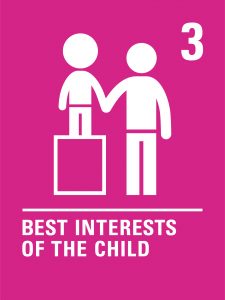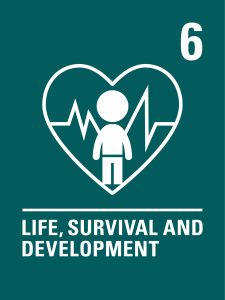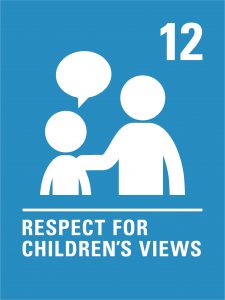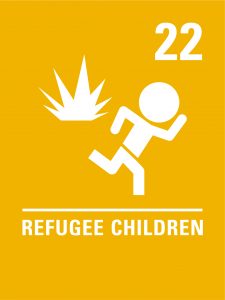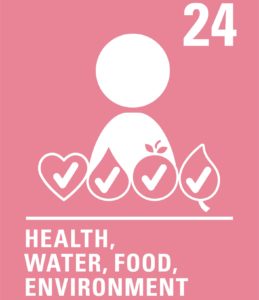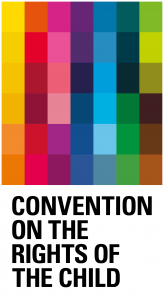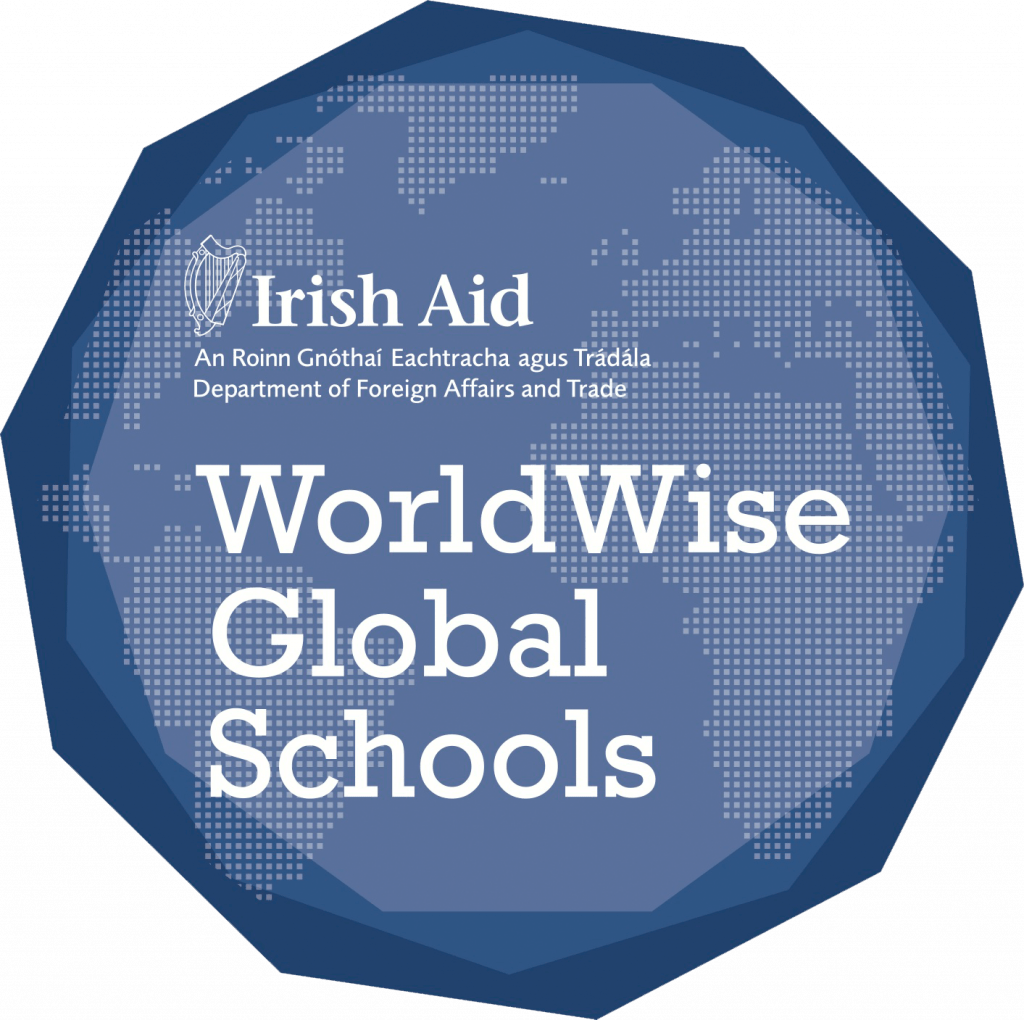CLIMATE ACTION Learn about the climate crisis and how children’s rights are being impacted. Discover how the world is responding and if Ireland is doing enough to meet its targets. Explore further what actions young people are taking to respond to the crisis and plan your actions locally.
Workshop Activities
| Activity 1 | Children's Right to Participate | 20 mins |
| Activity 2 | The Future We Want | 40 Mins |
| Activity 3 | Ireland's Action - on the Global Goals | 40 mins |
| Activity 4 | Individual Action - Footprint Pledge | 40 mins |
| Activity 5 | Political Action - Youth-led Movements | 40 mins |
Learning Objectives
- Apply a child rights-based approach to understanding the climate crisis
- Describe the causes and effects of the climate and biodiversity crisis
- Discover some current and future solutions
- Evaluate and prioritise meaningful personal actions
Curriculum Connections
JUNIOR CYCLE
Statements of Learning
SOL 7: The student values what it means to be an active citizen, with rights and responsibilities in local and wider contexts.
SOL 9: The student understands the origin and impacts of social, economic, and environmental aspects of the world around her/him.
SOL 11: The student takes action to safeguard and promote her/his wellbeing and that of others
SOL 19: Values the role and contribution of science and technology to society, and their personal, social and global importance
SOL 23: Brings an idea from conception to realisation
JC WELLBEING
Responsible – I take action to protect and promote my wellbeing and that of others.
Connected – I feel connected to my school, my friends, my community and the wider world. I appreciate that my actions and interactions impact on my own wellbeing and that of others, in local and global contexts.
JC CSPE 1.1, 1.3, 1.8, 1.9, 1.11, 2.9, 2.10, 3.12
JC Geography 1.9, 2.2, 2.4, 2.6
JC SPHE Strand 2 L0 2.3
JC SCIENCE
Resources
-
Climate Action Presentation
-
Terminology – Climate
-
Ireland’s Adaptation platform by EPA Climate Ireland
-
Informative Website NASA Climate Change Information
-
UNICEF’s Climate Resources for Activists
-
The World Counts
Teaching Notes
Sensitive Issue: This topic can be upsetting or overwhelming for participants who feel that these challenges will directly impact their futures. Be aware of the sensitive nature of this topic, and ensure that there is someone students can speak with if they find themselves feeling upset or struggling to grapple with the realities of this topic.
The World is in climate crisis, there are
years left to save the planet from climate change catastrophe, warns the UN.
Activity 1 – Children's Right to Participate
Duration: 20 mins
The aim of this activity is to get participants to think about the climate crisis and their right to be included in decisions that impact their lives.
Think, Pair, Share: How concerned are you about the climate crisis? How does it impact your life or your future? How knowledgeable are you on climate change and biodiversity loss or the actions the Irish government is taking on it? How vocal are you about it? Do you take any action on the climate or environment?
Walking debate: “Given the critical nature of the climate crisis and the impact it has on children’s rights, should we lower the voting age to 16 to enable young people to participate in elections?”
Activity 2 – The Future We Want
Duration: 40 Mins
The aim of this activity is for participants to consider their wants and needs within the framework of a sustainable world.
You will need: Slide Presentation
Personal reflection: Start the discussions on Climate Action with a reflection on needs and wants. Refer participants back to this throughout the discussions and activities.
Ask participants to divide an A4 sheet of paper into 12 boxes (3 columns and 4 rows)
- In the first row answer the following questions: What in life is important to me? What do I want in my future? What kind of world do I want?
- In the next row, answer the following questions: Would most people find those things important in life? Would most people want something similar in their future? Would most people want a similar world?
- In the next row, answer the following questions: Can most people in the world have the things that are important to them in life? Can most people in the world have the kind of future they want? Can most people in the world have the kind of world they want?
- In the next row, answer the following questions: What do I need to get this future/world for me? Do I and others have a right this kind of world? Can the planet sustain this for all?
Discussion: Ask participants to consider the difference between needs and wants. A need is an essential for most people to live, survive, develop and thrive and are usually protected as a right. Whereas wants are something people desire but are not necessary to survive and thrive. Should all people have their needs met before people’s wants are met? Discuss further this concept.
Video: Jane Goodall Mother Earth
Discussion:
- How does the video make you feel?
- Do you have a right to a sustainable future?
- What is needed to get there from here – new technologies, new systems of government or new economic systems?
Activity 3 – Ireland's Action - on the Global Goals
Duration: 40 mins
You will need: Sustainable Progress Index 2020 Report.
Group Work: The Global Goals are a framework for the world to take action on this crisis. These six goals are the most directly related to this topic and each has targets nations have agreed to meet by 2030. Determine based on a show of hands from participants, how well Ireland is doing in achieving each goal. Are we above target, on target or below target?
Divide participants into six groups, and assign each group a goal. Provide them with Social Justice Ireland’s recent report, The Sustainable Progress Index 2020. Ask participants to research and assess Ireland’s progress on their specific goal and determine Ireland’s grade A-F.
Extension: Ask participants to research possible solutions to achieving their assigned Goal and return to the group and present back their findings. Click on the goals above to link to Ted Talks that address each goal.
Activity 4 – Individual Action - Footprint Pledge
Duration: 40 mins
The aim of this activity is for participants to consider their own lifestyles and how they impact on the planet.
You will need: phones or computers
Activity: Have participants take this quiz from the World Wildlife Fund to find out their carbon footprint. It should take 10 minutes for them to complete.
Then ask each participant to reflect on the following questions:
- How do you feel about your score?
- Were you surprised?
- What was your biggest footprint area? Food, Stuff, Home or Travel?
- How much of your carbon footprint was a necessity and how much was a want?
- What would you be willing to change?
Group Work: Ask the participants to divide into Food, Stuff, Home or Travel groups depending on their biggest footprint area. Give the groups 5 minutes to talk about what actions they could take to reduce their carbon footprint. Ask each group to feedback, then ask participants to write one action that they pledge to do.
Activity 5 – Political Action - Youth-led Movements
Duration: 40 mins
The aim of this discussion is for participants to consider the urgent systemic and political changes that are needed to avert a climate catastrophe.
Discussion: It’s unfair to put the burden of climate change solely on individuals. Individual action is no doubt necessary if we are to reverse the climate crisis, but it is important to also think beyond voluntary behaviour change and think about collective political action. Systemic change needs a mass movement of people, holding to account the actions and policies of companies and governments. The special report — published by the United Nations’ Intergovernmental Panel on Climate Change — assessed what it will take to limit the global temperature increase to no more than 2.7º F (1.5º C) above preindustrial levels, in accordance with the 2015 Paris Agreement.
- Changing energy systems – identify 100% renewable energy solutions for the global energy system.
- Changing food systems – making diet changes away from land-intensive animal products.
- Changing infrastructure – making our urban areas green and energy-efficient.
- Changing land usage – Plant new forests equal to the size of Canada 3.9 million square miles.
- Changing transport systems – Switching from fossil fuels to electricity
For this kind of global systemic change to happen, people need to mobilise and put pressure on governments to invest and legislate for these changes and corporations to be held accountable for implementing and adhering to the changes. Ask participants to name people that are taking on this kind of political action on the climate crisis.
One of those people is undoubtedly Greta Thunberg, a 16-year-old climate activist. She has gained the attention of the world through her actions to address the climate crisis. She is not the first young person to lead a social movement, in fact, she was inspired by the #MarchForOurLives students from Marjory Stoneman Douglas High School and their actions on gun violence.
It is true to say that young people are often at the heart of social movements and have had an enormous impact in creating political change. Malala was another 16-year-old in 2013 that got the world’s attention.
In 1992, twenty-eight years ago, Severn Cullis-Suzuki attended the Rio Earth Summit, where, at the age of twelve, she delivered a powerful speech that garnered worldwide attention. Listen to her speech below and compare it to Greta’s speech in 2019.
Video: Severn Cullis-Suzuki speaking at the Rio Summit in 1992
Video: Greta Thunberg speaking at the World Economic Forum in 2019
The aim of this activity is to inspire participants to take action on climate and environmental issues, by understanding the resources available to them to learn, mobilise and hold decision-makers accountable.
Discussion: Ask participants to think about what has changed in the last 30 years that enabled Greta’s words to inspire a movement of millions. Many would argue that access to the internet allowed us to quickly find, access and exchange knowledge like never before. Social networks followed providing us with the ability to connect with others and inform them about online or real-world activities and events. This along with the largest cohort of educated young people ever to exist on our planet means that never before have young people been so powerful and influential to create change.
Think Pair Share: Ask participants to pair up and identify how they can use these tools to take action on the climate? Examples include:
- Research online the Irish government’s record on reducing carbon emissions.
- Email political parties or your local TDs, Councillors, Senators, MEPs to find out their latest actions on the climate crisis
- Email TD’s, or other decision-makers asking for stronger action/legislation to tackle waste, consumption, emissions etc.
- Research solutions tor reducing carbon emissions. Share your findings online or research and develop your own solutions
- Join online climate movements actions or activities happening locally, follow the link and sign up to take part, share the link to recruit friends.
- Calculate your carbon footprint online, research how to reduce it, share your results online to get others to follow.
- Download these awareness-raising resources and offer to raise awareness in your school or community.
- Research which companies are the worst climate offenders and start campaigns to boycott until they change their practices
After the discussion, get participants to write out each idea on an Action Card. Hang all the action cards around the room. Ask the group to decide which actions will make the biggest impact, and then choose 3 that they will each personally commit to doing. Ask each person to write down their 3 actions and keep it with them. Learn more about climate actions at 52climateactions.com.
Actions
We all have responsibility for achieving the Sustainable Development Goals by 2030. Below are the goals and their targets that address climate change. Use them, along with the Convention on the Rights of the Child to support your call to take action and address these issues. Below are just a few suggestions of actions you can take.
Tools
Explore
This activity can help your school achieve a Global Passport Award. Learn more or apply at WWGS’s Global Passport Award.
Funded by Irish Aid’s WorldWise Global Schools – contents are the responsibility of its author and do not necessarily represent or reflect WWGS and or Irish Aid policy.
